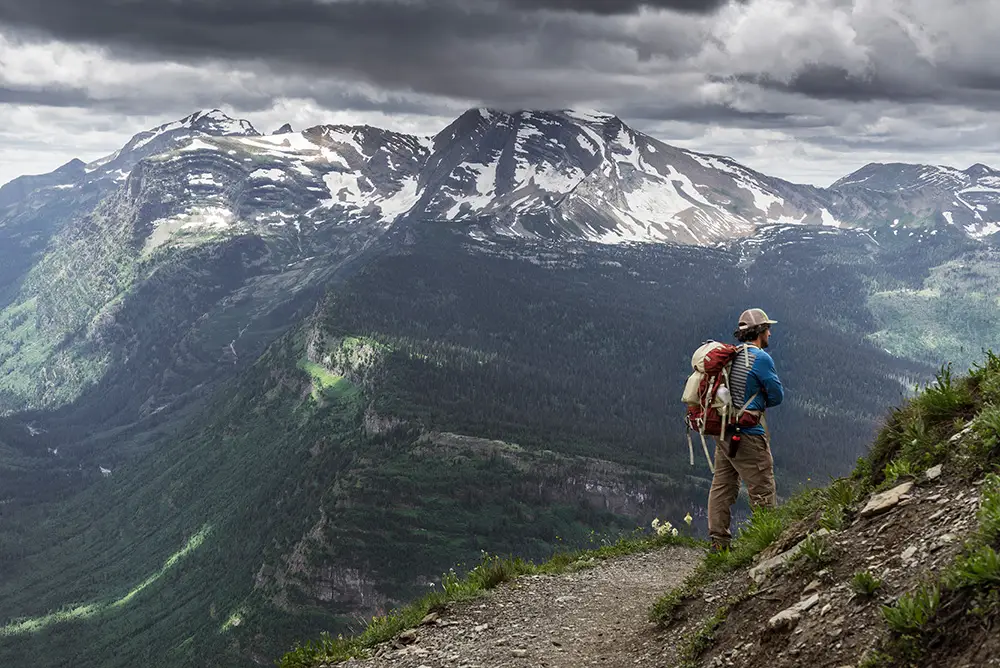Hiking Safety
Learn best practices for hiking safely.
Home » Hiking 101: The Beginner’s Hiking Guide » Hiking Alone
Hiking Alone: Staying Safe on Solo Adventures
Many hikers choose to hike alone. Solo hiking offers a unique opportunity for personal reflection and a deeper connection with nature, but it also comes with additional risks. Every year, we hear news stories of tragedies that happen to solo hikers, from getting lost in the wilderness for days or sometimes weeks, to even worse outcomes. Without a companion, you are solely responsible for your safety, so preparation and precaution are essential. Here’s how to stay safe on your solo hiking adventure.

"...you are solely responsible for your safety, making preparation and precaution essential."
Tell Someone Your Plans
Before heading out, always inform someone of your hiking itinerary. Share details like the trail you’ll be on, your start and end times, and when you expect to return. This ensures someone knows where you are in case of an emergency. If your plans change, update your contact accordingly.
Thoroughly Research the Trail
Solo hikers must be especially familiar with the trail they’re tackling. Study the route beforehand, noting key waypoints, elevation changes, water sources, and any potential hazards. Check for recent trail conditions and weather updates to avoid surprises on the trail.
Plan for the Unexpected
Carry extra food, water, and clothing, along with essential safety gear like a first aid kit, map, compass, and flashlight. Solo hikers should also consider carrying an emergency communication device like a satellite phone or personal locator beacon, especially in remote areas with limited cell service.
Stay Aware of Your Surroundings
While hiking, remain alert to your environment and pace yourself accordingly. Regularly check your map or GPS to ensure you’re on the right path, and take note of natural landmarks in case you need to retrace your steps. Avoid wearing headphones to stay aware of wildlife or other hikers.
Know Your Limits
Solo hiking isn’t the time to push beyond your physical limits. Choose a trail that suits your fitness level, and turn back if conditions become too challenging. Avoid hiking in extreme weather of any kind. Overestimating your abilities or underestimating the trail’s difficulty and weather conditions can quickly lead to exhaustion or injury.
Conclusion
Solo hiking can be a rewarding experience, but it requires extra preparation and caution. By letting others know your plans, thoroughly researching your trail, and packing for emergencies, you’ll be better equipped to enjoy the adventure while staying safe.
Table of Contents
Plan trips
Who are we?
get in touch!
© 2025. All rights reserved. No part of this website may be reproduced without written permission.
